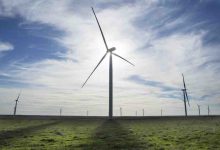The Australian Energy Market Commission has opened consultations on proposed changes to the framework governing marginal loss factors, which has emerged as one of the key issues for the energy industry, and threatens to inhibit investment in new wind and solar farms, and any other new generation technology for that matter.
Many wind and solar farms have been hit by major downgrades in their marginal loss factors in the past two years – some by up to one quarter, and the solar industry has been hit the most. The MLFs decide how much of a generator’s output is credited for revenue. So a big downgrade means less income.
Adding to the problems facing investors of existing and proposed projects is the volatility – some MLFs have gone down and then up, and others up and then down – and the lack of visibility over other projects that may affect their rating, and makes them all but impossible to predict.
This was an issue highlighted at the recent large-scale solar forum by Queensland transmission group Powerlink, which said it was unable – because of the current rules – to even inform some project proponents of other nearby proposals that may affect their output.
The AEMC says that as part of its review of the MLF framework, it is also looking to address this rule on confidentiality, which would be a welcome opening up of the traditionally secret and opaque workings of the National Electricity Market – a situation that suited the incumbents – to allow more scrutiny, and to provide some certainty.
“This may help address some current stakeholder concerns with the transmission loss factor framework by providing more information about forthcoming generation projects to allow investors to better forecast potential changes to loss factors,” the AEMC notes.
It is also having a broader rethink about the co-ordination of generation and transmission investment. Prompted by Audrey Zibelman and the Australian Energy Market Operator’s Integrated System Plan, Australian’s energy institutions are finally agreeing that they should have a plan to manage the clean energy transition, even if the federal government doesn’t have a policy.
The issue of MLFs has galvanised the industry, and RenewEconomy understands that a group of investors and developers has banded together to obtain modelling and lobbying support to change the methodology to one with a lesser impact on their collective investments. A key theme is that more certainty and less variability is needed to ensure investment.
Interestingly, the proposed rule change on marginal loss factors comes from Adani Renewables, which is yet to actually complete a large scale project in Australia, but whose 65MW Rugby Run project was delayed for many months as it sought to negotiate connection and commissioning issues.
Adani, which also wants to build a 130MW solar farm near Whyalla, one of a number of new projects in that region, is making two proposals to the AEMC.
Firstly, it wants the the allocation of so-called “intra-regional settlement residues” to be changed to that it applies equally between generators and networks users.
Secondly, it proposes a change to the marginal loss factor calculation methodology to an average loss factor methodology, meaning that all the installations in one region will have the same MLF, rather than individual projects suffering heavy losses and others not so much.
It is not entirely clear if this idea is supported by the broader industry, some of whom favour “fixed” MLFs for at least five years (some as long as 20 years), and others who have discussed “dynamic” MLF, which would change according to production and demand, but which could be incredibly hard to predict.
The AEMC approach is to throw the two Adani requests together and seek feedback from the broader market. It will hold a workshop in Brisbane in July. Having been asked the question – no rules get changed unless it is asked – the AEMC now hopes to find a broad agreement on how the MLFs should be treated, and the opening of the confidential data treated.
It will do this in consultation with both the clean energy industry, which describes the MLF issue as the biggest challenge the industry faces today, and AEMO, which has its own ideas on what should or could be done, particularly after the anxiety caused by its original estimates in March, and the sharp revisions it calculated after getting more details information from project proponents.
Already. the AEMC notes, numerous issues present themselves. Should MLF’s be marginal, multiple or average. How does this impact on generators, on daily bidding patterns, and on grid investment.
Should there be “caps and collars” – putting MLFs within a defined range, perhaps for a single region, and should they be grandfathered? (some long standing generators have had their MLFs downgraded by the construction of new generation they could not possibly have anticipated, particularly if they hadn’t been reading RenewEconomy about the cost reductions in wind and solar).
The AEMC doesn’t seem too keen on this idea (the issue of grandfathering, not about whether people should read RE), but it is open to suggestions.









